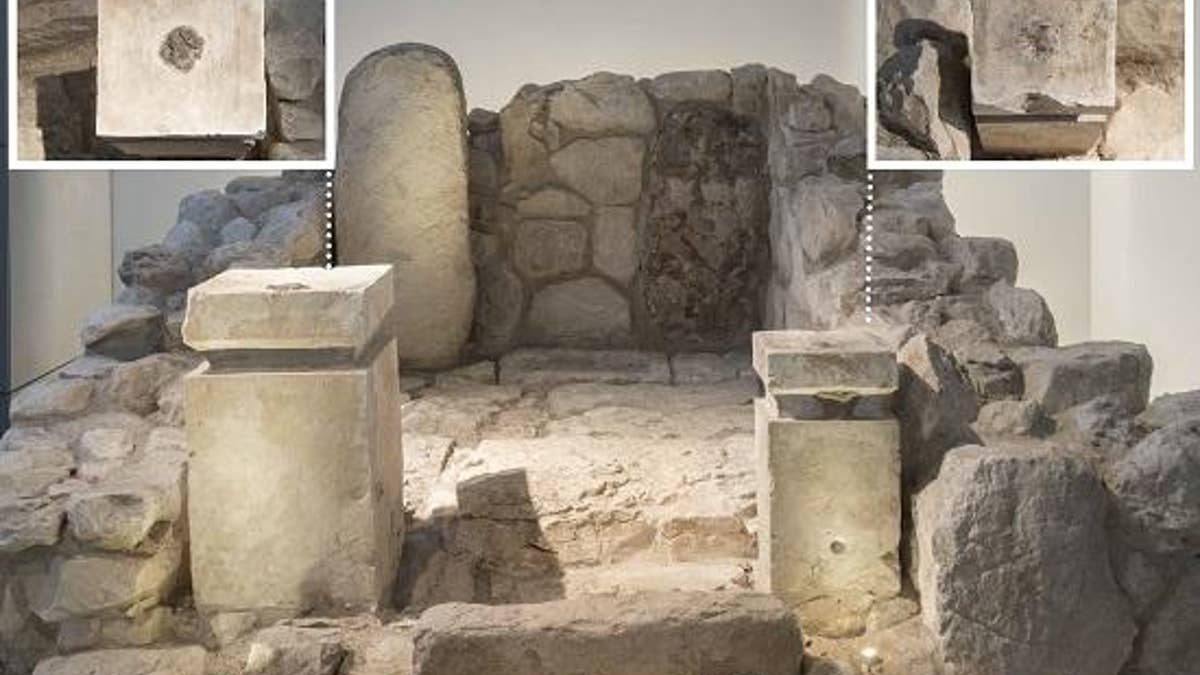Fox News Flash top headlines for May 29
Fox News Flash top headlines are here. Check out what's clicking on Foxnews.com.
Two altars in an ancient shrine in Israel have been revealing their secrets.
Material on the altars of the shrine, which was originally at Tel Arad in the Beersheba Valley, was found to include cannabis and frankincense. The shrine, which dates back to around 750 to 715 B.C., has been rebuilt at the Israel Museum in Jerusalem.
The limestone altars are at the entrance to the shrine’s "holy of holies," according to researchers.
“Evidently, they had played an important role in the cult practices of the shrine,” they explained in a statement. “An unidentified black solidified organic material was preserved on the altars' surfaces. Past analysis of these materials failed to identify their content and this dark material was recently submitted to organic residue analysis by modern methods.”
HIDDEN UNDERGROUND CHAMBERS DISCOVERED NEAR WESTERN WALL IN JERUSALEM
The analysis revealed that on the smaller altar cannabis had been mixed with animal dung for heating. The larger altar contained traces of frankincense that was mixed with animal fat, which was to promote evaporation, according to the researchers.

Front view of the shrine at Arad, rebuilt in the Israel Museum. The top -down view of the altars: on where you can see the black residue of cannabis and frankincense. (Collection of the Israel Antiquities Authority, Photo © The Israel Museum, by Laura Lachman)
The research sheds new light on religious practices in the ancient Biblical kingdom of Judah.
"This is the first time that cannabis has been identified in the Ancient Near East,” said lead author Eran Arie of The Israel Museum in Jerusalem in the statement. “Its use in the shrine must have played a central role in the cultic rituals performed there.”
The experts also note that frankincense came from Arabia, so its presence in the shrine reflects Judah’s participation in South Arabian trade.
6-YEAR-OLD BOY DISCOVERS 3,500-YEAR-OLD CLAY TABLET DEPICTING ANCIENT CAPTIVE
The research has been published in the journal Tel Aviv.
Israel continues to reveal new aspects of its rich history. Hidden underground chambers dating back 2,000 years, for example, were recently discovered near the Western Wall in Jerusalem.
A 6-year-old boy in Israel also recently discovered a 3,500-year-old clay tablet depicting an ancient captive and his captor.
ANCIENT BIBLICAL ERA TEMPLE DISCOVERED IN ISRAEL
In another project, an Iron Age temple complex discovered near Jerusalem is shedding new light on an ancient Biblical city.
CLICK HERE TO GET THE FOX NEWS APP
Last year, the room in Jerusalem venerated as the site of Jesus’ Last Supper was revealed in stunning detail thanks to remarkable 3D laser scanning technology.
Follow James Rogers on Twitter @jamesjrogers





















